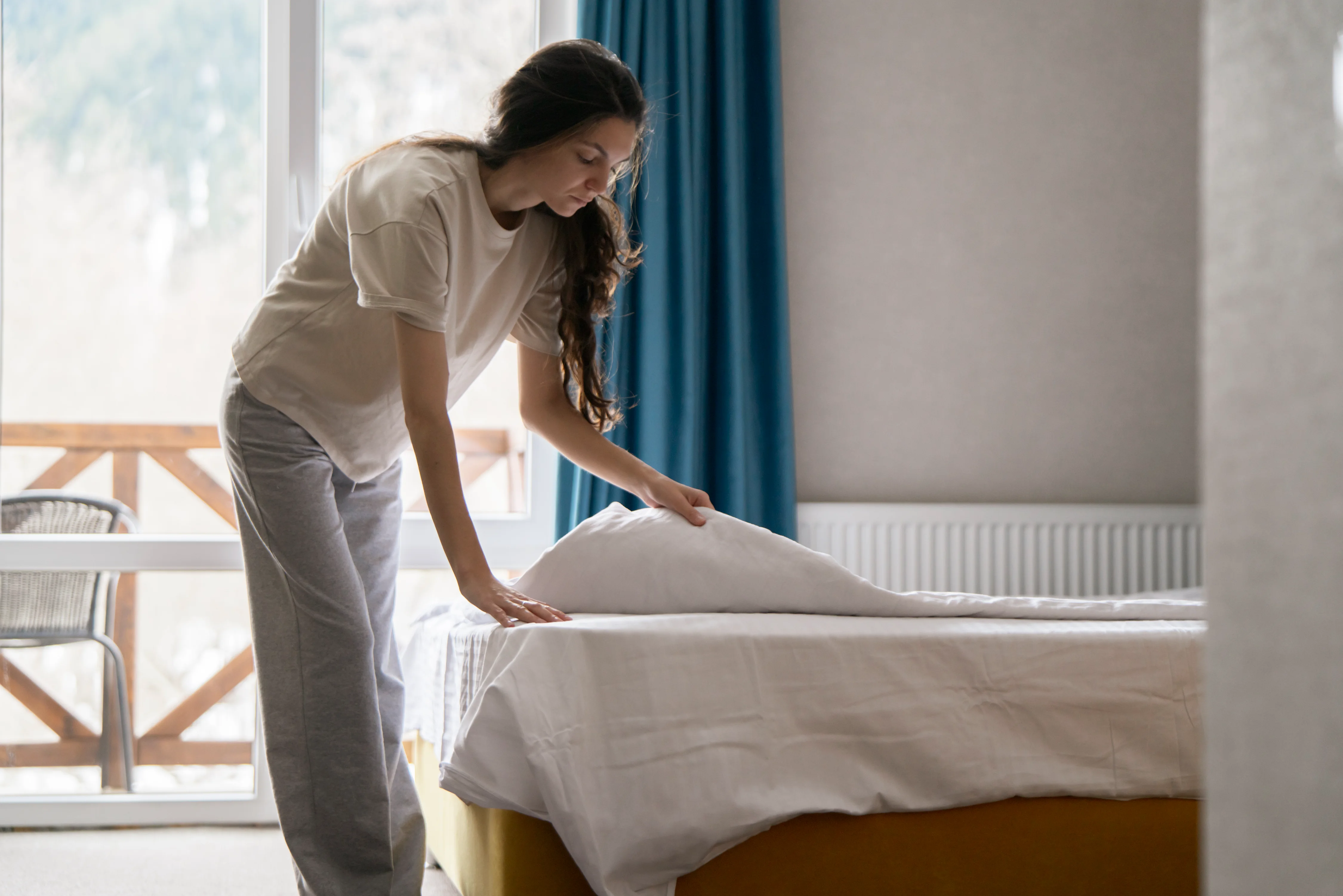Maintaining a clean and hygienic sleeping environment is essential for ensuring a good night's rest. One of the most critical components of this environment is a mattress protector.
Not only does it shield your mattress from spills, stains, and allergens, but it also plays a significant role in enhancing the longevity of your bedding. However, regular cleaning of your mattress protector is often overlooked.
In this article, we will explore the best methods and tips for cleaning your mattress protector, allowing you to maintain a healthy and comfortable sleeping environment.
What is a mattress protector?
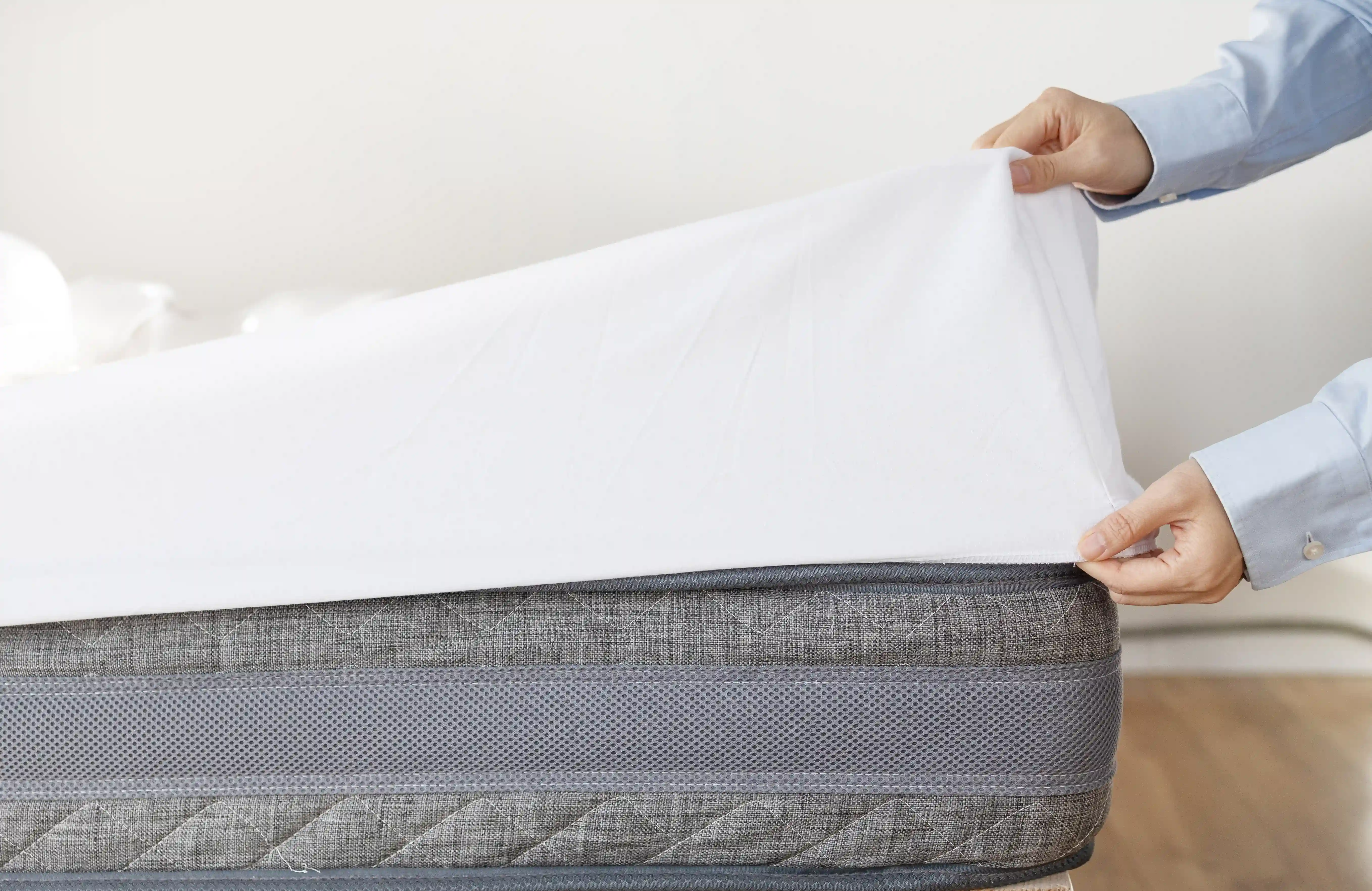
A mattress protector is a specialized bedding accessory designed to safeguard your mattress from various forms of damage, including spills, stains, and allergens. It acts as a barrier, helping to extend the lifespan of your mattress while maintaining its hygiene.
Additionally, many mattress protectors offer features such as waterproofing and breathability, ensuring comfort while preventing moisture buildup.
By using a mattress protector, you can enhance your sleep environment and protect your investment in quality sleep. Overall, a mattress protector is an essential item for anyone looking to maintain a clean and comfortable sleeping space.
Check our list for the Best Mattress Protectors.
Why You Should Clean Your Mattress Protector
Cleaning your mattress protector is essential for maintaining a healthy sleep environment. Over time, dust mites, allergens, and bodily fluids can accumulate on the protector, potentially leading to respiratory issues or skin irritations.
Regular cleaning helps eliminate these harmful substances, ensuring a more hygienic surface for sleep.
Types of Mattress Protectors
When it comes to selecting a mattress protector, understanding the different types available is crucial for making an informed decision tailored to your specific needs.
Each type of mattress protector serves a distinct purpose, ranging from providing additional comfort to offering robust protection against spills and allergens.
Cotton
Cotton mattress protectors are celebrated for their softness and breathability. Made from natural fibers, they are an excellent choice for individuals who prioritize comfort and want to maintain a cozy sleeping environment.
Cotton protectors are often hypoallergenic, making them suitable for those with sensitive skin or allergies. However, while they provide a level of protection against dust mites and minor spills, they may not be fully waterproof, which could be a concern for individuals with children or pets.
Vinyl
Vinyl mattress protectors are designed to offer robust waterproof protection. These protectors are ideal for guarding against liquid spills and bodily fluids, making them a popular choice in households with young children or in settings such as hospitals and nursing homes.
Vinyl is generally easy to clean and maintain, but its synthetic nature can sometimes lead to issues with breathability and comfort. Therefore, individuals should weigh the importance of waterproofing against potential discomfort when considering vinyl options.
Waterproof
Waterproof mattress protectors bridge the gap between comfort and functionality. Many modern waterproof protectors are designed with advanced materials that allow for breathability while still providing a barrier against liquids and allergens.
These products often incorporate technologies that prevent moisture buildup, ensuring that the sleeping surface remains comfortable throughout the night. This category has gained popularity among consumers seeking a balance of protection and comfort in their bedding.
Quilted or Padded
Quilted or padded mattress protectors add an extra layer of cushioning to the mattress, enhancing overall comfort while still protecting against dust mites, allergens, and spills. These protectors often feature soft padding that can improve the feel of your mattress, making them an excellent choice for those looking to rejuvenate an older bed or add plushness to a firmer model.
While they offer a good level of protection, it's important to verify that they are also machine washable and durable enough to withstand regular use.
Encased vs Fitted
The distinction between encased and fitted mattress protectors is essential in choosing the right product.
Encased protectors fully envelop the mattress and zip closed, providing comprehensive coverage against allergens. They are particularly beneficial for those who suffer from severe allergies or live in areas where bedbug infestations are common.
Fitted protectors, meanwhile, are designed to cover only the top surface of the mattress and have elastic edges that secure them in place. They are generally easier to put on and remove for washing, but may not provide the same level of all-around protection as encased options.
How Often Should You Clean a Mattress Protector?
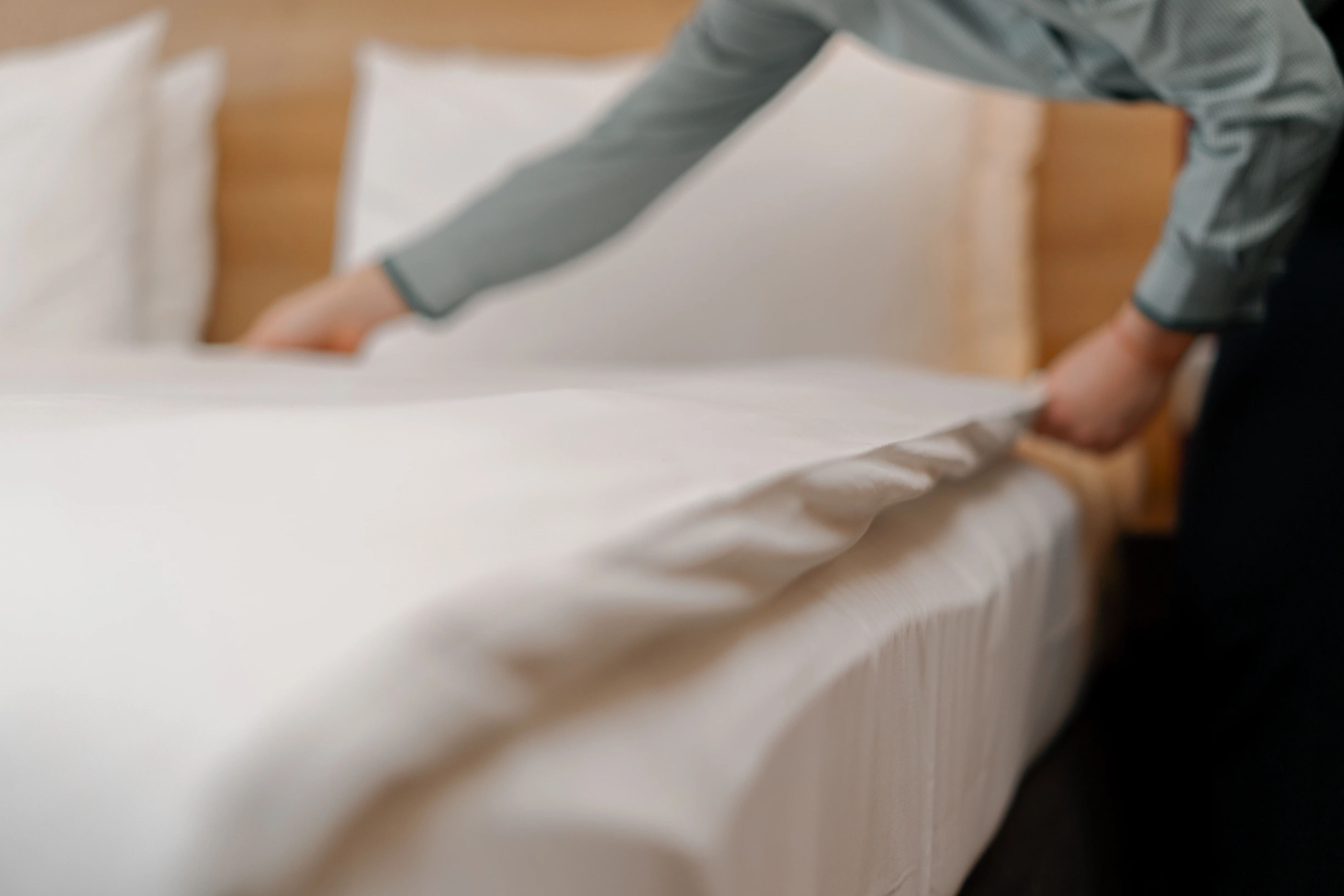
Cleaning a mattress protector is an essential aspect of maintaining a healthy sleeping environment.
By adhering to simple guidelines and being mindful of any special circumstances, you can maintain a clean and comfortable sleeping environment that promotes better sleep hygiene and overall well-being.
General Recommendation
General recommendations suggest that a mattress protector should be cleaned every 1 to 3 months. This frequency ensures the removal of dust mites, allergens, and other contaminants that can accumulate over time.
Regular cleaning can also help preserve the integrity of the mattress itself, as many protectors are designed to extend the life of your mattress by acting as a barrier against spills, stains, and general wear and tear. Washing the protector keeps it hygienic and enhances your overall sleep quality, as a clean surface contributes to a more restful night.
Exceptions
While the general guideline is to wash your mattress protector every one to three months, some exceptions may necessitate more frequent cleaning. For instance, if you or anyone else using the bed has allergies, asthma, or other respiratory issues, it is advisable to clean the mattress protector more often, potentially monthly, to mitigate allergen exposure.
Additionally, if you have pets that share your bed or if you experience frequent spills or accidents, increasing the cleaning frequency to once a month can be beneficial. These circumstances create an environment where allergens and bacteria can thrive, making regular cleaning crucial for health and hygiene.
Pre-Cleaning Steps
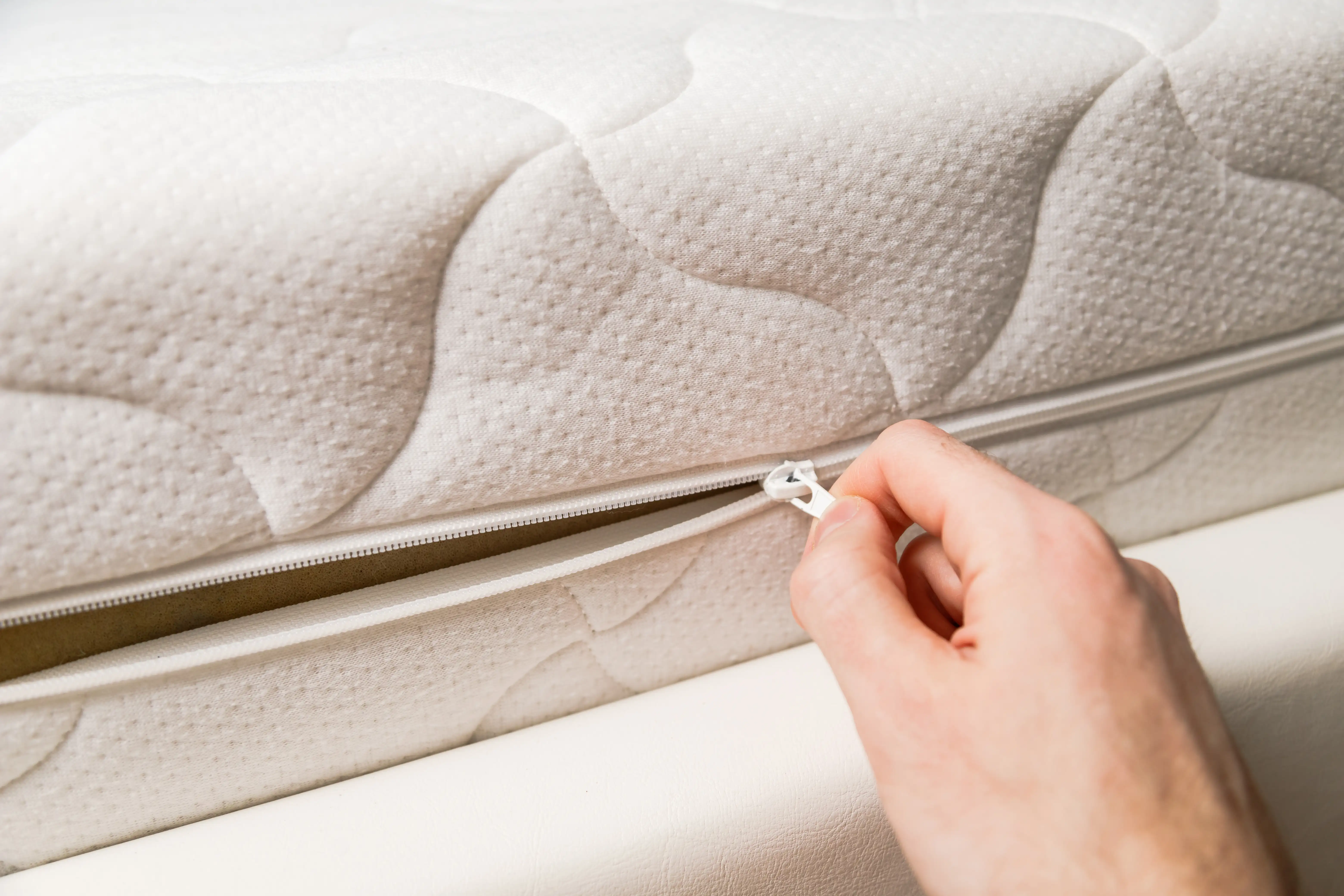
When it comes to maintaining the cleanliness and longevity of your mattress, using a mattress protector is an essential step.
However, before you can wash your mattress protector, it is crucial to follow several pre-cleaning steps to ensure the process is effective.
Remove the Protector From the Mattress
The first step is to remove the protector from the mattress. This task should be performed gently to avoid any damage to the mattress itself.
It is advisable to unfasten any straps or zippers carefully, as this will help prevent tearing or stretching of the protective fabric. Proper removal sets the stage for a thorough cleaning, allowing you to address any issues effectively.
Shake Off Debris or Hair
Once you have successfully removed the mattress protector, the next step is to shake off any debris or hair that may have accumulated on its surface.
This simple action can significantly reduce the amount of dirt and allergens that may be trapped within the fabric fibers. Shaking the protector outside or over a clean surface allows loose particles to fall away, making subsequent cleaning more efficient.
If necessary, using a lint roller or a vacuum cleaner with an upholstery attachment can further assist in removing stubborn hair and dust particles that may not easily dislodge.
Check the Care Label for Specific Instructions
It is critical to check the care label for specific instructions related to the cleaning of the mattress protector. Most protectors come with a care tag that provides valuable information regarding washing temperatures, drying methods, and suitable detergents.
Adhering to these guidelines is essential, as improper cleaning could result in damage or reduced effectiveness of the protector. For instance, some materials may require cold water, while others can withstand hot washes.
Additionally, certain protectors may be machine washable, while others might need hand washing or spot treatment. Understanding these nuances will help ensure that your mattress protector maintains its protective qualities and extends its lifespan.
Gather Supplies
Gathering all necessary supplies before starting the cleaning process is vital for efficiency and effectiveness. Essential items may include a suitable detergent recommended by the manufacturer, a soft brush for scrubbing any tough stains, and access to washing machines or sinks, depending on the care instructions.
Having these materials on hand allows for a seamless transition into the washing phase, minimizing interruptions and ensuring that no steps are overlooked during the cleaning process.
Additionally, if you plan on treating any stains beforehand, having stain removers or natural remedies readily available will enhance your cleaning efforts.
Machine Washing Your Mattress Protector
When it comes to maintaining a clean and hygienic sleeping environment, machine washing your mattress protector is an essential practice that ensures longevity and freshness.
Pre-Treat Any Stains
Before you toss your mattress protector into the washing machine, it is crucial to pre-treat any visible stains. This step is significant as it helps to break down and lift stains effectively before the washing process begins.
You can use a stain remover specifically designed for fabrics or create a mixture of water and mild detergent to treat the stained area. Gently rub the solution into the fabric, allowing it to sit for a few minutes to penetrate the stain.
This pre-treatment step will enhance the overall cleaning efficiency of your mattress protector during the wash cycle.
Choose a Gentle Cycle
Choose a gentle cycle on your washing machine, as this will help to protect the fabric from damage while still providing adequate cleaning.
The gentle cycle is particularly recommended for mattress protectors, which may be made from delicate materials or contain waterproof layers. Along with selecting a gentle cycle, you should also opt for cold or warm water.
Use Cold or Warm Water
Using cold water is often best for preserving the integrity of the fabric and preventing shrinkage, while warm water can be effective in removing more stubborn stains.
Regardless of the temperature chosen, ensuring that you adhere to these recommendations will contribute to the longevity of your mattress protector.
Add a Mild Detergent
Adding a mild detergent is essential in the washing process; harsh detergents can break down the protective materials within your mattress protector and lead to diminished effectiveness over time.
A mild detergent will not only clean effectively but will also be gentle on the fabric, maintaining its quality and functionality.
Avoid Fabric Softeners or Bleach
It is crucial to avoid using fabric softeners or bleach when washing your mattress protector. Fabric softeners can create a residue that may diminish their breathability and moisture-wicking properties, while bleach can cause discoloration and damage to the fabric. Therefore, ensure that you stick with a mild detergent for optimal results.
Rinse Thoroughly
After completing the wash cycle, it is vital to rinse your mattress protector thoroughly. This step ensures that all detergent residues are removed from the fabric, which is particularly important for those with sensitive skin or allergies.
A thorough rinse will help prevent any irritation caused by leftover detergent and will also leave your mattress protector feeling fresh and clean. If possible, consider running an additional rinse cycle to ensure all soap residues are completely washed away.
Hand-Washing Your Mattress Protector
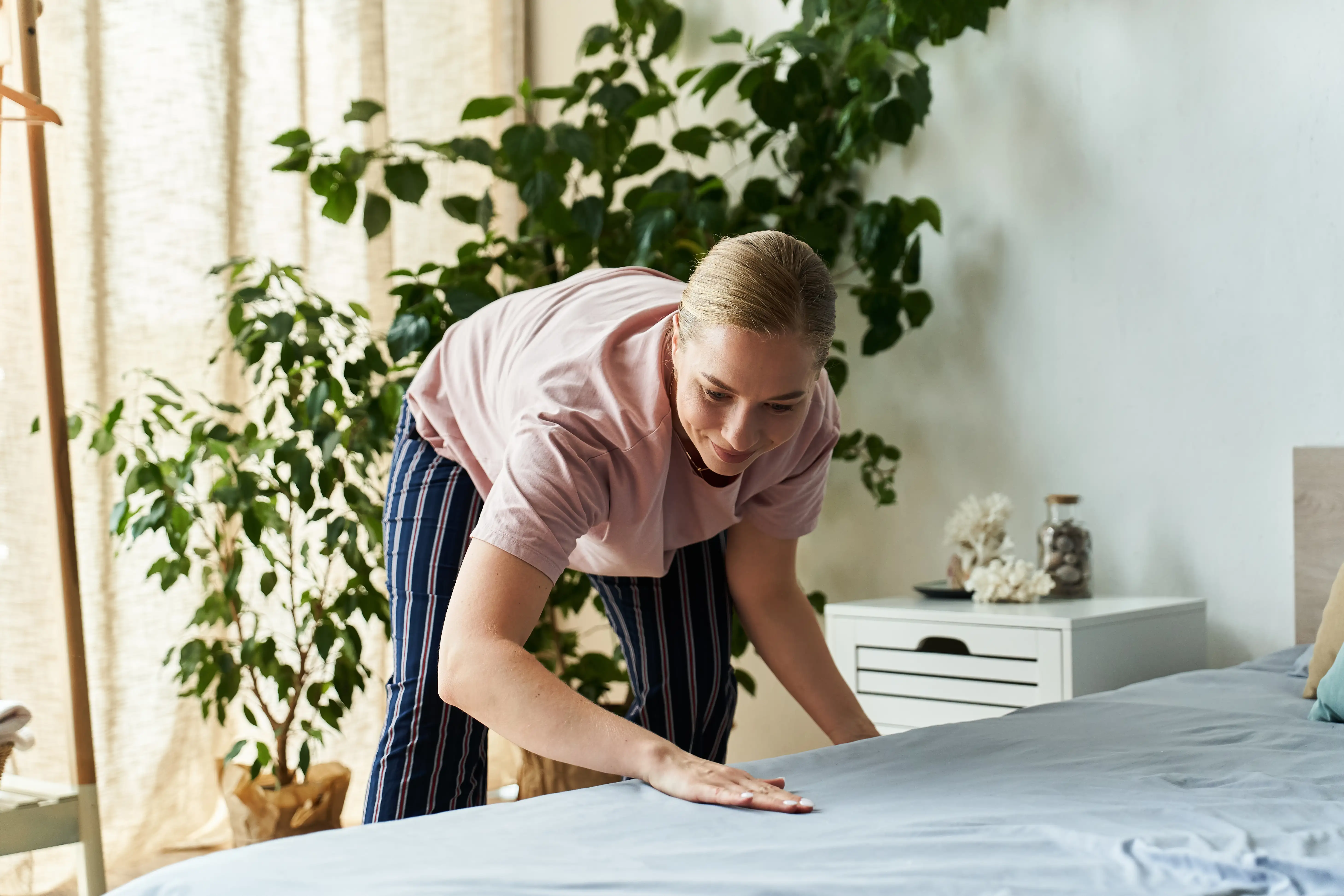
Over time, mattress protectors can accumulate dirt, sweat, allergens, and other residues that may negatively impact your sleep quality.
Instead of tossing it into a machine, hand-washing allows for a gentler approach that can help preserve the integrity of the fabric while ensuring a thorough clean.
Fill a Bathtub or a Large Basin with Lukewarm Water
To begin the hand-washing process, fill a bathtub or large basin with lukewarm water. It is crucial to avoid hot water, as it can damage certain materials and cause shrinkage.
Lukewarm water is ideal as it is gentle enough to protect the fabric while effectively loosening dirt and grime.
Add a Mild Detergent
After filling the tub or basin, add a mild detergent to the water. Opt for a detergent that is free from harsh chemicals and fragrances, as these can irritate sensitive skin and may not be suitable for all fabric types.
Submerge and Soak
Gently submerge the mattress protector in the solution. Allow it to soak for about 15 to 30 minutes. This soaking period enables the detergent to penetrate the fibers and break down any embedded dirt or stains effectively.
Gently Agitate
After soaking, gently agitate the water with your hands. Be careful not to wring or twist the fabric, as this could lead to damage or distortion of its shape. Instead, use a gentle motion to help lift dirt away from the fabric without compromising its integrity.
Rinse Thoroughly
After you have agitated the mattress protector in the soapy water, it is crucial to rinse it thoroughly. Drain the soapy water from the bathtub or basin and refill it with clean, lukewarm water.
Submerge the mattress protector again and gently agitate it to remove any remaining soap residue. It may be necessary to repeat this rinsing process several times until the water runs clear and free of suds.
Drying Your Mattress Protector
When it comes to maintaining the longevity and effectiveness of your mattress protector, the drying method you choose plays a significant role.
Whether you choose air drying or tumble drying, understanding the appropriate techniques will help you maintain your mattress protector's functionality and extend its lifespan.
Air Drying
Two common options are air drying and tumble drying, each with its own set of advantages and considerations.
Air drying is a gentle approach that preserves the integrity of the mattress protector's materials, making it an ideal choice for those concerned about potential shrinkage or damage from high heat.
Simply hang your mattress protector in a well-ventilated area, preferably outdoors, to allow natural airflow to work its magic. This method not only minimizes wear and tear but also ensures that any residual moisture evaporates completely, helping to maintain a fresh and clean sleeping environment.
Tumble Drying
If you opt for tumble drying, it is crucial to use the ideal dryer settings to avoid compromising the quality of your mattress protector. Most manufacturers recommend a low heat setting to prevent damage from excessive temperatures.
Additionally, incorporating dryer balls can help facilitate even drying and reduce static cling. It is advisable to periodically check the mattress protector during the drying cycle to ensure it does not overheat or become overly dry, as this could lead to fabric wear and reduced effectiveness in protecting your mattress.
Dealing With Stains and Odors
Dealing with stains and odors requires a systematic approach that begins with prompt action and appropriate treatment methods.
By employing these techniques, one can maintain the integrity of fabrics while ensuring they remain fresh and clean.
Ultimately, understanding the nature of the stain and applying the right treatment will lead to successful outcomes in stain removal and odor control.
Spot Treatment Before Washing
Spot treatment before washing plays a crucial role in ensuring that stains do not set and become permanent fixtures on fabrics. When a stain occurs, it’s important to act quickly.
First, gently blot the area with a clean cloth or paper towel to absorb as much of the stain as possible without rubbing it in further.
For Fresh Stains
For fresh stains on the mattress protector, using a mild detergent mixed with water can be an effective solution. Apply this mixture to the stained area, allowing it to sit for several minutes before rinsing with cold water.
This method helps lift the stain from the mattress protector while minimizing the risk of damage.
For Urine Stains and Odor
Urine stains and odors present a unique challenge due to their biological nature. When dealing with such stains, immediate action is essential to prevent lingering smells and discoloration. First, blot the area to remove excess moisture, then use a solution of white vinegar and water to neutralize the odor.
Vinegar is effective in breaking down the uric acid found in urine, thus preventing the odor from setting in.
Natural Cleaners
By incorporating some natural cleaners into your mattress protector cleaning routine, you can effectively manage stains and odors while promoting a healthier sleeping environment.
- Baking Soda: Baking soda is a versatile ingredient known for its ability to absorb odors and lift stains from various surfaces, including carpets and upholstery. A simple paste of baking soda mixed with water can effectively tackle tough stains, while sprinkling it on surfaces allows it to neutralize odors over time.
- Vinegar: Vinegar serves as a powerful natural cleaner due to its acetic acid content, which can cut through grease and grime. When mixed with water, vinegar can be used to clean windows, countertops, and even laundry, eliminating unwanted odors and leaving surfaces fresh.
Enzyme Cleaners for Tougher Stains
Enzyme cleaners are particularly beneficial for tougher stains that regular detergents might not effectively address. These cleaners contain natural enzymes that target specific types of stains, such as food, grease, and biological substances, by breaking them down at a molecular level.
When using enzyme cleaners, it is important to follow the mattress protector manufacturer’s instructions closely for optimal results.
Typically, these products require some time to work effectively; they should be applied directly to the stain and allowed to sit for a specified duration before rinsing or laundering as usual.
Storage and Maintenance Tips
Proper storage and maintenance of mattress protectors play a crucial role in their durability and effectiveness.
Following these tips will help you preserve your mattress protectors in excellent condition, contributing to a healthier sleeping environment for years to come.
Make Sure it’s Completely Dry Before Storing
One of the most critical steps in this process is ensuring that your mattress protector is completely dry before storing it. Moisture can lead to mold and mildew growth, which not only damages the protector but can also compromise the quality of your mattress.
After washing, allow the protector to air dry completely or use a dryer on a low heat setting before folding it up for storage. This simple yet effective precaution helps maintain a hygienic sleeping environment and extends the life of your protector.
Fold and Store in a Dry, Cool Place
Once your mattress protector is dry, the next step is to fold and store it in a dry, cool place. Avoid areas with high humidity or extreme temperatures, as these conditions can negatively impact the material and its protective qualities.
A dedicated storage container, such as a breathable fabric bag, can help keep the protector clean and protected from dust or pests.
Additionally, make sure to lay it flat or neatly fold it to prevent any creasing or distortion of its shape, which can affect its fit when you are ready to use it again.
Rotate with a Second Protector for Convenience
For those who frequently wash their bedding, rotating with a second mattress protector can be a convenient approach to maintenance.
Having an extra protector on hand allows for immediate replacement while one is being laundered, ensuring that your mattress remains shielded from spills, allergens, and wear.
This practice not only enhances the lifespan of both protectors but also promotes a consistent level of cleanliness. Establishing a routine where you alternate between two protectors can simplify your maintenance efforts and provide peace of mind regarding hygiene and comfort.
FAQs
When to choose handwashing for a mattress protector?
Handwashing is ideal for delicate materials or those with intricate designs that may not withstand machine washing. Additionally, if the mattress protector has specific care instructions indicating handwashing
When to replace your mattress protector?
It is advisable to replace your mattress protector every 2 to 3 years, depending on usage and care. Signs indicating the need for a replacement include visible stains, odors, or wear and tear such as frayed edges or lost elasticity.
Is it safe to use bleach on my mattress protector?
While bleach is an effective disinfectant, it may damage the fabric and diminish the protective qualities of the mattress protector. Many manufacturers recommend avoiding bleach to maintain the integrity of the materials.
Should you wash the mattress protector with sheets or towels?
Generally, you can wash your mattress protector alongside sheets, as they often share similar washing instructions. However, adding towels, especially heavier ones, might lead to uneven cleaning or excess wear on your mattress protector.
Can mattress protectors go in the dryer?
Most mattress protectors are designed to withstand machine drying; however, it is crucial to check the care label for specific instructions. Using a low heat setting is recommended to avoid damaging any waterproof or breathable membranes.
What is the best way to wash a waterproof mattress cover?
Typically, you should remove the cover from the mattress and shake it to remove any debris. Additionally, you can machine wash it in cold water using a gentle cycle and mild detergent. Avoid using bleach or fabric softeners, as these can damage the waterproof layer.
Can you dry mattress protectors?
Yes, and air drying is often recommended to extend the lifespan of the fabric and maintain its protective qualities. Additionally, always ensure that the mattress protector is completely dry before putting it back on the mattress to prevent mold and mildew growth.
How to get stains out of a mattress cover?
It depends on the type of stain, whether it’s coffee stains, blood stains, or other types of stains. For organic stains such as sweat or food, a mixture of mild detergent and water can be applied. For tougher stains, consider using a blend of baking soda and vinegar to lift the blemish.
Conclusion
Knowing how to clean a mattress protector is an essential skill for any homeowner looking to maintain a pristine sleeping area.
By following the recommended cleaning methods and adhering to care instructions, you can ensure that your mattress protector remains effective in safeguarding your mattress against dirt and allergens.
Regular cleaning not only extends the life of your mattress protector but also contributes to a healthier sleep environment. With just a little effort and attention, you can enjoy the benefits of a clean and comfortable sleeping space, enhancing your overall well-being.
Dom Abraham
As the lead content writer at Sleepiverse. Dom pours his heart into writing mattress reviews, bedding product reviews, and medically-reviewed health articles. Dom is from Portugal and likes to spend his free time writing on the beach as it gives him a sense of comfort. Aside from writing mattress reviews in front of the soothing beach view, Dom likes to experiment with new amazing food ideas.


